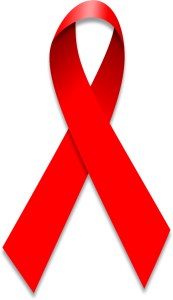6. HIV/AIDS
1.78 millions of deaths
3.1% of deaths.
HIV stands for Human Immunodeficiency Virus. It kills or damages the body’s immune system cells. AIDS stands for acquired immunodeficiency syndrome. It is the most advanced stage of infection with HIV.
HIV most often spreads through unprotected sex with an infected person. It may also spread by sharing drug needles or through contact with the blood of an infected person. Women can give it to their babies during pregnancy or childbirth.
The first signs of HIV infection may be swollen glands and flu-like symptoms. These may come and go a month or two after infection. Severe symptoms may not appear until months or years later.
5. Diarrhoea diseases
2.46 millions of deaths
4.3% of deaths.
Diarrhoea is the condition of having three or more loose or liquid bowel movements per day. It is a common cause of death in developing countries and the second most common cause of infant deaths worldwide. The loss of fluids through diarrhea can cause dehydration and electrolyte imbalances. In 2009 diarrhea was estimated to have caused 1.1 million deaths in people aged 5 and over and 1.5 million deaths in children under the age of 5. Oral rehydration salts and zinc tablets are the treatment of choice and have been estimated to have saved 50 million children in the past 25 years.
4. Chronic obstructive pulmonary disease
3.28 millions of deaths
5.8% of deaths.
Chronic obstructive pulmonary disease (COPD) is one in every of the foremost common lung diseases. It makes it tough to breathe. There are 2 main sorts of COPD:
- Chronic bronchitis, that involves a long-term cough with mucus
- Emphysema, that involves destruction of the lungs over time.
Smoking is that the leading reason for COPD. The additional someone smokes, the additional doubtless that person can develop COPD. However, some folks smoke for years and never get COPD. In rare cases, nonsmokers who lack a protein known as alpha-1 antitrypsin will develop emphysema.
Other risk factors for COPD are:
- Exposure to sure gases or fumes within the workplace
- Exposure to significant amounts of secondhand smoke and pollution
- Frequent use of cooking fireplace while not correct ventilation





